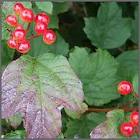Wheat was the earliest cultivated crop which our hunter-gatherer ancestors grew when they began to settle. Archaeological evidence suggests that the earliest varieties were grown in the Near East (Syria Iran Karacadag Mountains Turkey Lebanon Fertile Crescent .
 Varieties of wheat include Hard Red Winter, Hard Red Spring, Soft Red Winter, and White wheat (which is actually yellow).
Varieties of wheat include Hard Red Winter, Hard Red Spring, Soft Red Winter, and White wheat (which is actually yellow). It is a member of the Gramineae family so related to barley,oats and other members of the grass family. Bulgur wheat and couscous come from wheat, and have been processed a little, but still retain most of their nutrients as compared to refined white flour, which in the US is “enriched,” although the iron and B-complex vitamins that are put back in to the flour are not as many as those extracted during the milling process.
 Durum wheat is used to make pasta, and wheat is the grain that is most used in the production of the foods we eat. It is the basis for breads, breakfast cereals, and is good when added to soups and stews in one of its forms.
Durum wheat is used to make pasta, and wheat is the grain that is most used in the production of the foods we eat. It is the basis for breads, breakfast cereals, and is good when added to soups and stews in one of its forms.
 The part of the wheat plant that we eat is the kernel or seed or wheatberry, all different names for the same thing. It is made up of three distinct parts: - the endosperm, bran and germ. The endosperm comprises about 83% of the weight of the kernel and is the source of white flour. This contains protein, carbohydrates and iron, the four main B-complex vitamins thiamin, riboflavin, niacin, folic acid and fibre. Bran comprises 14.5% of the weight of the kernel and can be bought separately, and can be added to breakfast cereals and bread as well as soups and stews. This contains fibre and a little protein along with vitamins E and B-complex ones with trace minerals and phytochemicals which have antioxidant properties. Lastly the germ comprises 2.5 % of the weight of the kernel, and is usually extracted from flour because of its 10 % fat content which reduces the shelf-life of white flour. This is, however a very good source of B-complex vitamins and minerals and is included in whole wheat flour. The main minerals contained in wheat are calcium, copper, phosphorous, iron and zinc, manganese, magnesium and the amino acid, tryptophan is also one of the constituents.
The part of the wheat plant that we eat is the kernel or seed or wheatberry, all different names for the same thing. It is made up of three distinct parts: - the endosperm, bran and germ. The endosperm comprises about 83% of the weight of the kernel and is the source of white flour. This contains protein, carbohydrates and iron, the four main B-complex vitamins thiamin, riboflavin, niacin, folic acid and fibre. Bran comprises 14.5% of the weight of the kernel and can be bought separately, and can be added to breakfast cereals and bread as well as soups and stews. This contains fibre and a little protein along with vitamins E and B-complex ones with trace minerals and phytochemicals which have antioxidant properties. Lastly the germ comprises 2.5 % of the weight of the kernel, and is usually extracted from flour because of its 10 % fat content which reduces the shelf-life of white flour. This is, however a very good source of B-complex vitamins and minerals and is included in whole wheat flour. The main minerals contained in wheat are calcium, copper, phosphorous, iron and zinc, manganese, magnesium and the amino acid, tryptophan is also one of the constituents. Whole grains are particularly good for our health and have been shown to have heart-protective properties as well as cancer protective ones as they contain good amounts of nutrients which have antioxidant properties. White flour, on the other hand is of little nutritional value compared with the whole grain flour.
Whole grains are particularly good for our health and have been shown to have heart-protective properties as well as cancer protective ones as they contain good amounts of nutrients which have antioxidant properties. White flour, on the other hand is of little nutritional value compared with the whole grain flour.




































